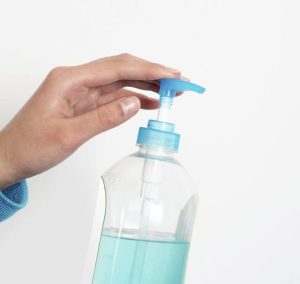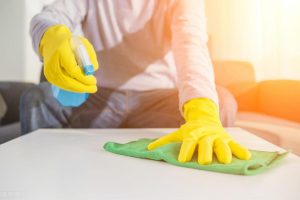消毒在维护公众健康方面发挥着至关重要的作用,尤其是在人们意识增强的时期。然而,围绕消毒存在一些常见的误解,需要加以解决。本文阐述了一些常见的误解,并提供了有关正确卫生做法的准确信息,以确保最佳的卫生处理和保护。
误区一:“消毒剂越强越好”。
一种普遍的误解是使用较高浓度的消毒剂可以更有效地进行消毒。然而,这并不完全正确。虽然消毒剂旨在杀死病原体,但使用浓度过高可能无效,甚至可能造成健康风险。正确遵循制造商的说明和推荐的稀释比例对于获得所需的结果至关重要。

误解二:“消毒过的物品不再需要清洗”。
另一个常见的误解是,仅消毒就无需清洁。事实上,清洁和消毒是相辅相成的过程。清洁可以去除可见的污垢和碎片,而消毒可以杀死病原体。这两个步骤对于彻底消毒都是必要的。在使用消毒剂之前,应使用适当的清洁剂和方法清洁表面。

误区三:“家庭消毒可以消灭所有细菌和病毒”。
很多人认为家庭消毒可以彻底消灭所有细菌和病毒。然而,重要的是要了解消毒可显着减少微生物负荷,但可能无法消除所有微生物。定期消毒对于最大程度地降低传播风险仍然至关重要,尤其是在高接触区域。此外,使用 EPA 批准的消毒剂并遵循建议的接触时间对于有效消毒至关重要。
有效消毒的最佳实践:
遵循说明:务必阅读并遵循消毒剂制造商提供的说明。这包括适当的稀释比例、接触时间和任何特定的安全预防措施。
消毒前清洁:优先使用适当的清洁剂和技术清洁表面,以去除污垢、污垢和有机物。这为有效消毒表面做好了准备。
选择正确的消毒剂:选择 EPA 批准的适合预期用途和表面的消毒剂。不同的表面可能需要不同类型的消毒剂,因此请参阅产品标签以获取指导。
确保适当的接触时间:让消毒剂在建议的接触时间内保留在表面上。这使得消毒剂有足够的时间有效杀死病原体。
保持良好的通风:适当的气流有助于促进干燥过程并最大限度地减少吸入消毒剂烟雾的风险。确保正在消毒的区域通风良好。
通过揭穿有关消毒的常见误解,我们可以促进正确的消毒实践并确保更健康的环境。请记住,有效的消毒包括遵循制造商的说明、了解消毒前清洁的重要性以及针对不同表面使用适当的消毒剂。通过遵循这些最佳实践,我们可以提高消毒效果并保护自己和他人免受有害病原体的侵害。